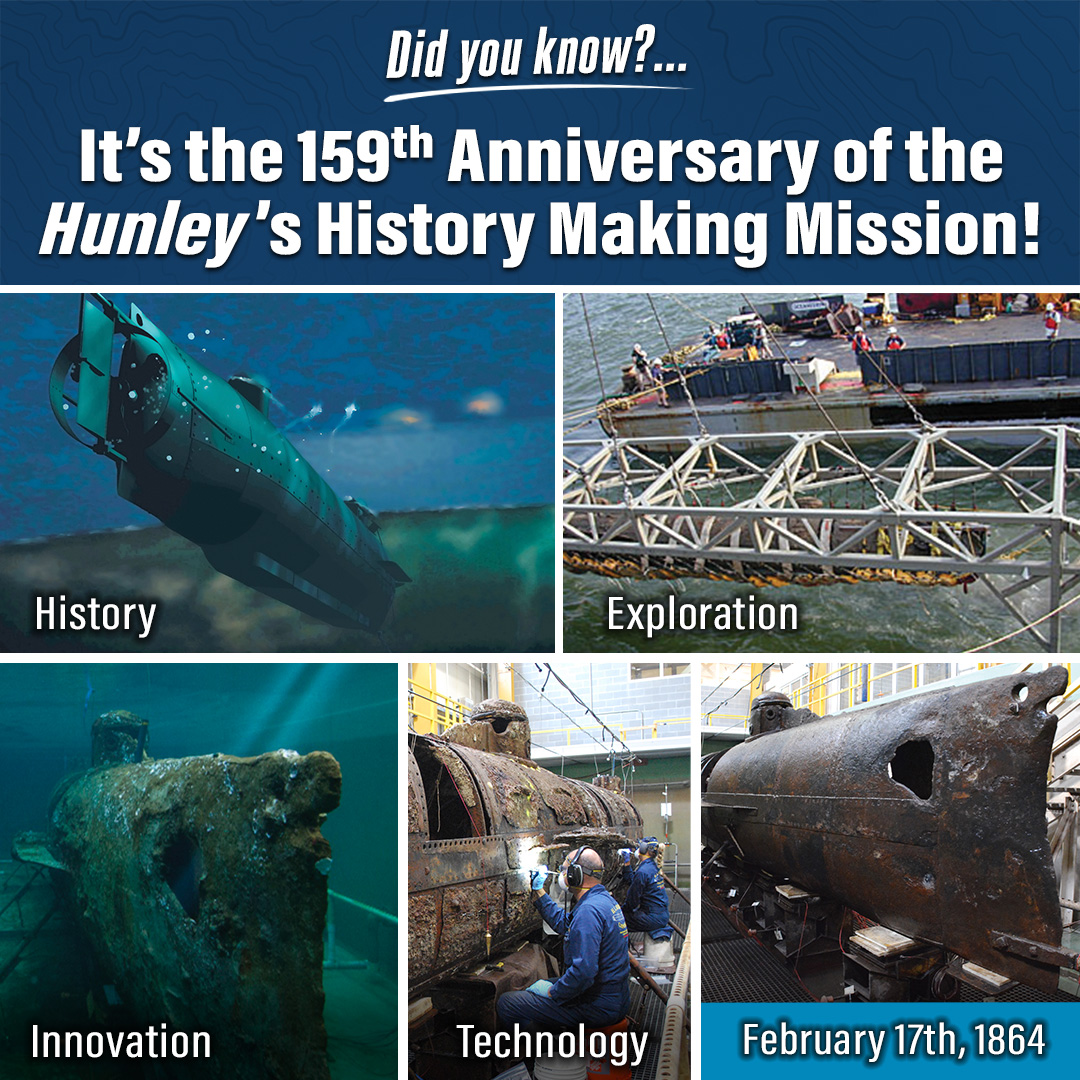Greetings. Many of the visitors to our website (members and non-members alike) all have one thing in common…a passionate interest in the 1715 Fleet, its history, its loss, its rediscovery, and its recovery. But, in addition, many have an interest in other non-Fleet-related shipwrecks. Occasionally we will post an article about a shipwreck that had some historical significance. For example, the S.S. Central America has been featured on this website from time to time. Today marks a historic event worth noting. It is the 159th anniversary of the sinking of the Hunley. On this day in 1864, the Hunley was sent on a mission. That mission was to sink an enemy ship that was part of a blockade. But the Hunley was not like most ships. You see, the Hunley was a submarine. A Confederate submarine. She sank a Union warship and became the first submarine to sink an enemy ship. But, after this, she disappeared. For more about this intriguing vessel, read on …
TODAY IN HISTORY: THE HUNLEY BECAME THE WORLD’S FIRST SUCESSCUL COMBAT SUBMARINE
On this day in 1864, the Hunley submarine embarked on a mission that would change naval warfare for all time. She sank an enemy warship in the waning days of the Civil War and became the first successful combat submarine.
After she made world history, the Hunley disappeared without a trace. For over a century, treasure hunters and history buffs searched in vain for the submarine. In 1995, an expedition led by Clive Cussler’s National Underwater Maritime Agency (NUMA) finally located the Hunley and her eight-man crew.
Bringing the Hunley back to land was a major engineering feat. After years of planning, on August 8th, 2000, she was gently lifted from her ocean grave and delivered to the Warren Lasch Conservation Center for study, excavation, and preservation. Scientists working to save the submarine have made fascinating discoveries and are advancing conservation science with their cutting-edge work.
The Hunley Project has made a long list of accomplishments and technological advancements including:
Investigating the Mystery of the Hunley’s Disappearance: Important forensic evidence and clues have been collected that will ultimately help answer questions about why and how the Hunley vanished. Using this evidence, one day tell the Hunley’s full story and this important chapter in naval history will be complete.
Excavation: The groundbreaking excavation of the crew compartment unearthed rare 19th century artifacts, including a gold coin that saved the life of the submarine’s Captain at the Battle of Shiloh in 1862. The coin is curved from the indention of a bullet and inscribed with the words “My Life Preserver.” Other artifacts were uncovered that taught us about life toward the end of the Civil War. The crew’s remains were also uncovered and later buried.
Saving Other Artifacts: The Hunley lab has become an internationally recognized center of excellence. Clemson University now runs the state-of-the art facility, leading the way in saving the Hunley and other important artifacts from around the world.
New Technologies: Technologies have been developed that will substantially reduce the time and cost needed to save other maritime treasures.
Education and Awareness: Visiting the Hunley is a profound educational experience. Guests view a unique historical artifact while learning about preservation efforts and our nation’s rich naval history. With limited weekends-only tour hours, over 1 million visitors from all 50 states and over 20 countries have visited and learned more about the development of submarines throughout the centuries. Over 300,000 students have come through our doors instilling a love of history and science for the next generation.
The Hunley has also been the subject of movies, documentaries and feature coverage on National Geographic, The History Channel, Discovery Network, The Today Show and dozens of other media outlets.
Visit The Friends of The Hunley website here.
